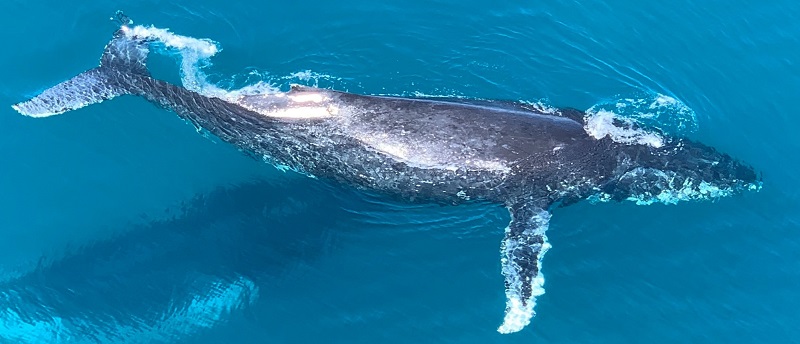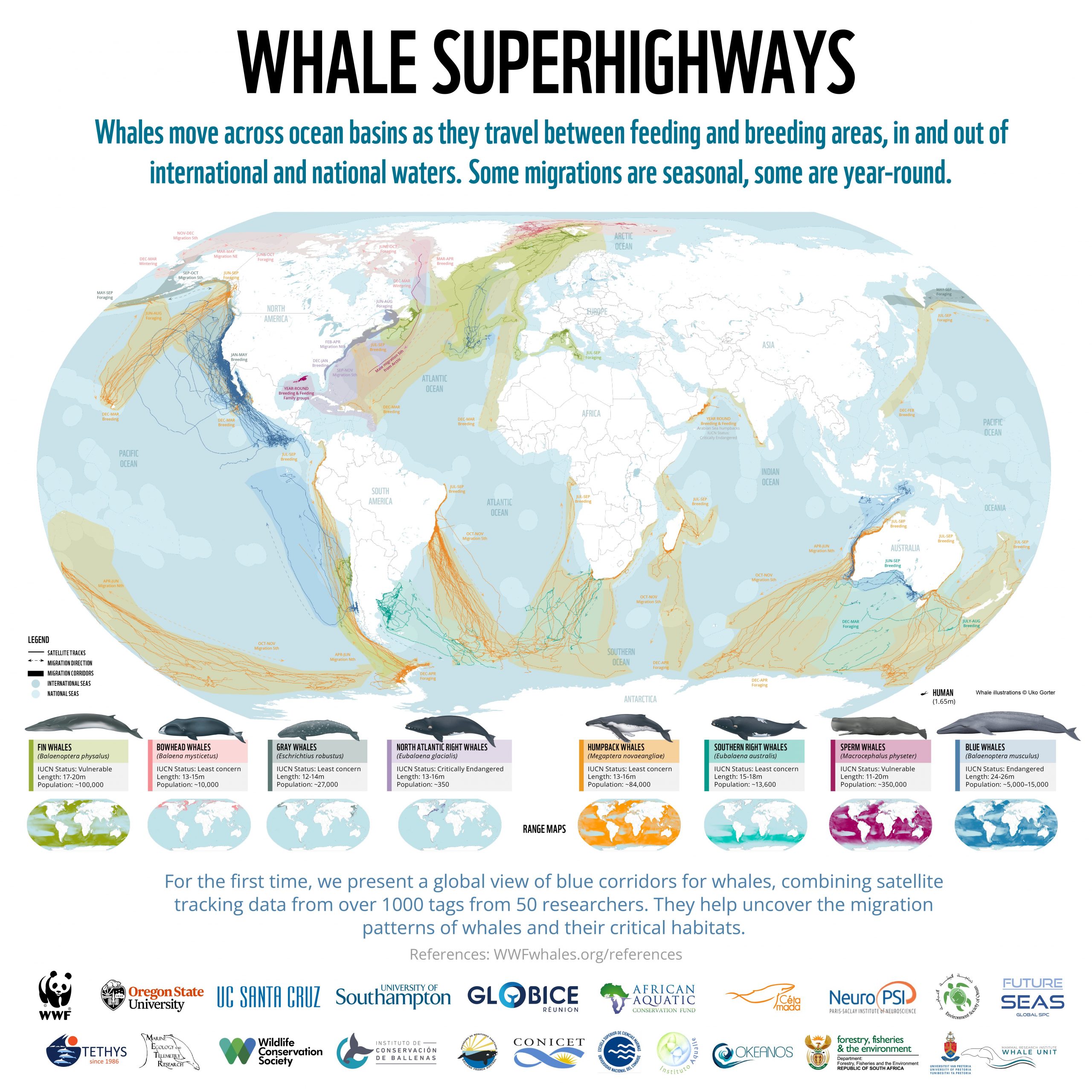← Back
Identifying whale migration routes in the global oceans

WWF has just published a report using 30 years of tracking for a meta-analysis of whale migration routes over all the oceans. This map of “migration highways” should help in protecting whales in general, but also the whole oceanic ecosystem, since they are a key species in its health and balance.
Nearly half of the thirteen great whale species are still considered as Endangered or Vulnerable, even after decades of protection. At the same time, whales are considered “umbrella” species, living indicators of the health of their ecosystems. Moreover, they play a major role in them, from capturing carbon to enhancing marine productivity.
Threats on the species
They migrate following routes depending on the species and populations, sometimes travelling thousands of kilometers each year. Those migrations, however, are becoming increasingly dangerous. More generally, a number of threats put great whale species at risk, to a different degree but ultimately all of them are concerned.
Climate change affects prey (abundance, distribution and type), and can change the timing of vital behaviors such as migration. Entanglement in fishing gear – whether active or discarded ones — is the most significant threat globally. Commercial whaling is still ongoing, even if by few countries. Overfishing threatens cetacean prey availability. Pollution, in particular plastic is also a major threat. Underwater noise has been known to perturb cetaceans for a long time, suspected in mass mortality of whales. The offshore exploration, mineral exploitation (including depth seabed mining) and coastal development also disturb the whales. Deaths caused by ship strikes have been documented, especially in areas where there is high vessel traffic overlapping important ocean habitats.
Tracking to identify important habitats
Argos satellite tracks have now been collected for 30 years (or more) for some animals, or groups of animals. All the species of whales, in particular, have been tracked during the last three decades thanks to satellite telemetry techniques. Such long series of data enables to provide with analysis on species’ habits, including migratory behaviors and their possible changes over the long term.
The satellite tracks of over 1000 migratory whales worldwide, representing 30 years of data contributed by more than 50 research groups from Oregon State University, the University of California Santa Cruz, the University of Southampton and several other contributing organisations, with leading marine scientists involved has thus been analyzed, under the coordination of WWF.
The output is a map of the main routes followed by all the great whale species.
Improved conservation of whales
This map and the in-depth analysis accompanying it in the WWF report will help inform future conservation efforts to inform management and policy making for migratory whales. The report maps out a new conservation approach to address these mounting threats and safeguard whales, through enhanced cooperation from local to regional to international levels. Of particular urgency is engagement with the United Nations, which is set to finalise negotiations on a new treaty for the high seas (Areas Beyond National Jurisdiction) in March 2022.
Reference & links
- Protecting blue corridors report: Challenges and solutions for migratory whales navigating national and international seas, https://wwfwhales.org/resources/protecting-blue-corridors-report (WWF)
- OSU press release: https://beav.es/wMQ
Photo: whales (credit Nadia Levenets for Unsplash)

